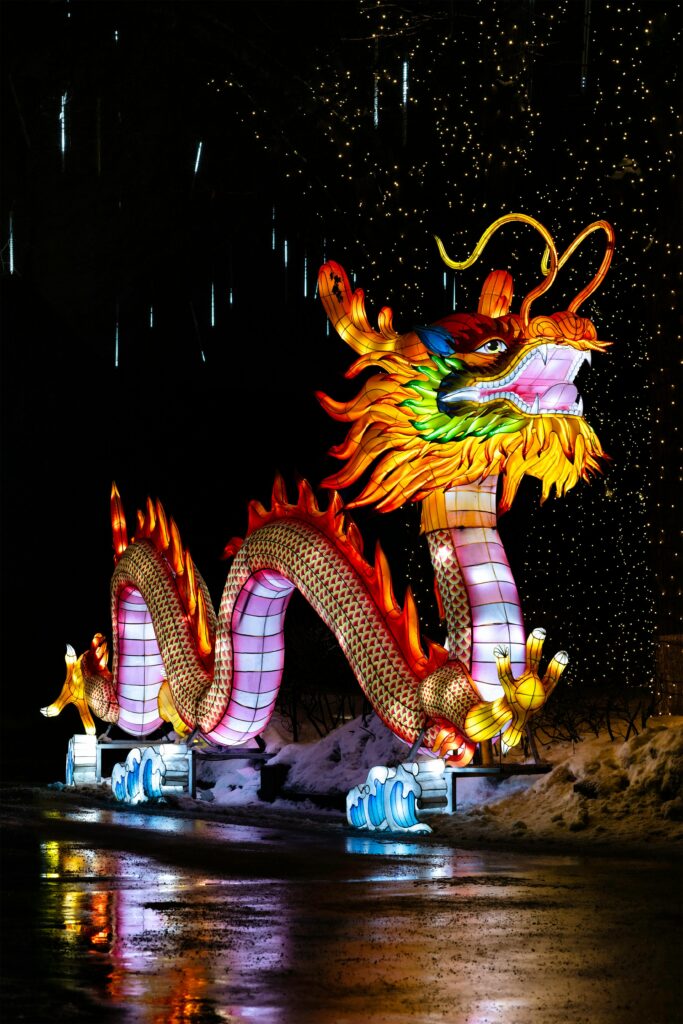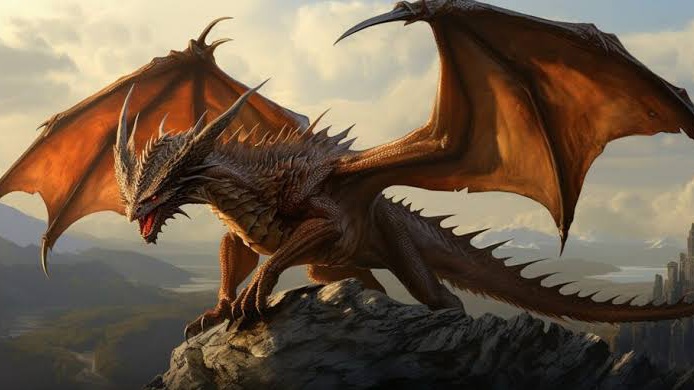Introduction
Dragons have fascinated humanity for centuries, appearing in myths, folklore, and legends across almost every culture. From the Western fire-breathing dragons to the benevolent Eastern dragons, these mythical creatures carry deep symbolism and varying meanings. Today, they continue to captivate our imaginations through literature, film, and art, as well as in cultural practices and beliefs. This article delves into the origin of dragons, their symbolism, and their impact across different cultures.
Outline
- Dragon mythology
- Symbolism of dragons
- Types of dragons
- Dragon in culture
- Eastern vs. Western dragons
The Origin of Dragon Mythology
The idea of dragons has roots that stretch back to ancient times. Scholars suggest that the earliest tales of dragons might have come from sightings of large creatures like crocodiles, pythons, or even the bones of dinosaurs. In Mesopotamia, one of the earliest civilizations, dragons symbolized chaos and were featured in creation myths. Similarly, ancient Chinese and Japanese mythologies featured dragon-like creatures that became the basis for their unique depictions.
- Dragon Mythology: Ancient stories often portray dragons as creatures that exist on the boundary between the natural and supernatural. In Greek mythology, dragons were seen as serpent-like beings, such as the Hydra, a multi-headed beast slain by Hercules.
- Religious Influence: Many religions incorporated dragons into their lore. For instance, Christianity in medieval Europe saw dragons as evil, equating them with the devil, representing the forces of chaos and destruction.
- Archaeological Influence: The discovery of large bones might have contributed to dragon legends. Dinosaur bones unearthed in China, for example, are thought to have inspired some ancient beliefs about dragons.
Symbolism of Dragons in Different Cultures
Dragons symbolize a range of ideas depending on the culture, from strength and power to wisdom and protection.
- Eastern Dragons: In Eastern mythology, particularly Chinese, Japanese, and Korean cultures, dragons are revered as symbols of power, strength, and good fortune. Chinese dragons are often associated with water, rain, rivers, and lakes. They are believed to bring life-giving rain for crops and are worshipped as deities in Chinese culture. Known as Lóng in Chinese, these dragons are wise, protective, and benevolent.

2. Western Dragons: In Western cultures, dragons are generally portrayed as monstrous, fire-breathing creatures that hoard treasures and kidnap maidens. They symbolize chaos, danger, and greed. The Western dragon is usually an antagonist, often slain by a hero as a demonstration of bravery and virtue. The most famous Western dragon legends come from medieval Europe, where dragon-slaying became a popular motif in folklore and art.

3. Modern Symbolism: Today, dragons are celebrated worldwide as symbols of fantasy, adventure, and mystique. They often appear in literature, films, and video games as both villains and wise mentors.

Types of Dragons: A Global Perspective
Dragons vary widely across cultures, and each has distinct characteristics:
- Chinese Lung Dragons: Chinese dragons are serpentine, lack wings, and are associated with the sky and rain. They are commonly depicted as water-related deities, bringing rain and prosperity.

2. Japanese Tatsu Dragons: Similar to Chinese dragons but with unique features, Japanese dragons are often depicted as protectors of sacred places, such as temples.

3. European Dragons: These are the classic fire-breathing dragons that guard treasures and challenge knights. The Western depiction of dragons usually includes wings, four legs, and a penchant for destruction.

Wyverns: In European mythology, wyverns are a type of dragon with only two legs, often associated with war and pestilence. They appear frequently in medieval heraldry.

Hydra: In Greek mythology, the Hydra is a multi-headed dragon that regrows two heads for every one that is cut off. It represents the difficulty of overcoming a seemingly unbeatable opponent.

Dragon in Culture: Influence on Art, Literature, and Entertainment
Dragons have become a staple of popular culture, influencing a variety of art forms.
- Literature and Fantasy: In Western literature, dragons have played prominent roles in fantasy novels, such as J.R.R. Tolkien’s The Hobbit, where Smaug embodies the classic traits of a greedy, treasure-hoarding dragon. George R.R. Martin’s A Song of Ice and Fire series features dragons that serve as both powerful weapons and symbols of the Targaryen family’s might.
- Film and Television: Dragons have appeared in countless films and TV shows, with some of the most iconic being the dragons in Game of Thrones and How to Train Your Dragon. Each portrayal offers a unique take on the personality, strength, and beauty of dragons, making them beloved figures in cinema.
- Video Games: Dragons are popular enemies and allies in video games. They are prominent in franchises such as The Elder Scrolls, Dragon Quest, and Dungeons & Dragons, where players can encounter or even control dragons. These games give players the opportunity to interact with these powerful creatures, further embedding dragons into contemporary culture.
- Art and Festivals: In China, dragons are celebrated in various festivals, such as the Dragon Boat Festival. The dragon is a cultural icon, representing wisdom, strength, and protection. Dragon dances and dragon boat races are common practices that honor the dragon as a symbol of community strength and good fortune.
Eastern vs. Western Dragons: A Cultural Comparison
Understanding the differences between Eastern and Western dragons provides insight into each culture’s values and beliefs.
- Nature vs. Nurture: Eastern dragons are often viewed as guardians, protectors, and symbols of life-giving water, while Western dragons are typically portrayed as destructive and greedy. This difference reflects the values of each culture: Eastern traditions emphasize harmony with nature, while Western traditions often highlight the struggle between good and evil.
- Physical Characteristics: Eastern dragons are typically wingless, long, and snake-like, whereas Western dragons are often depicted with wings, muscular bodies, and the ability to breathe fire. These physical traits align with the dragons’ symbolic meanings—Eastern dragons are peaceful, while Western dragons are warlike.
- Cultural Representation: Dragons in the East are frequently honored in art and rituals, such as the Dragon Dance and dragon-themed festivals, while Western dragons are often subjects of heroic tales, in which a knight or hero slays the dragon to protect their people.
The Enduring Legacy of Dragons
Dragons have moved beyond mythology and into the everyday lives of people across the globe. They are cultural icons, representing ideas ranging from wisdom to bravery. In the modern era, dragons continue to evolve, appearing in countless forms and stories that reflect our fascination with these mythical creatures. From being revered in temples to starring in Hollywood films, dragons continue to be one of humanity’s most enduring symbols of power, mystery, and imagination.
Conclusion
Dragons remain powerful symbols in both Eastern and Western traditions, embodying complex meanings from wisdom and power to chaos and fear. Whether viewed as protectors or as fearsome adversaries, dragons represent the mystery of the unknown and the power of myth in human history. Their adaptability in art, literature, and popular culture ensures that dragons will continue to inspire generations to come.



